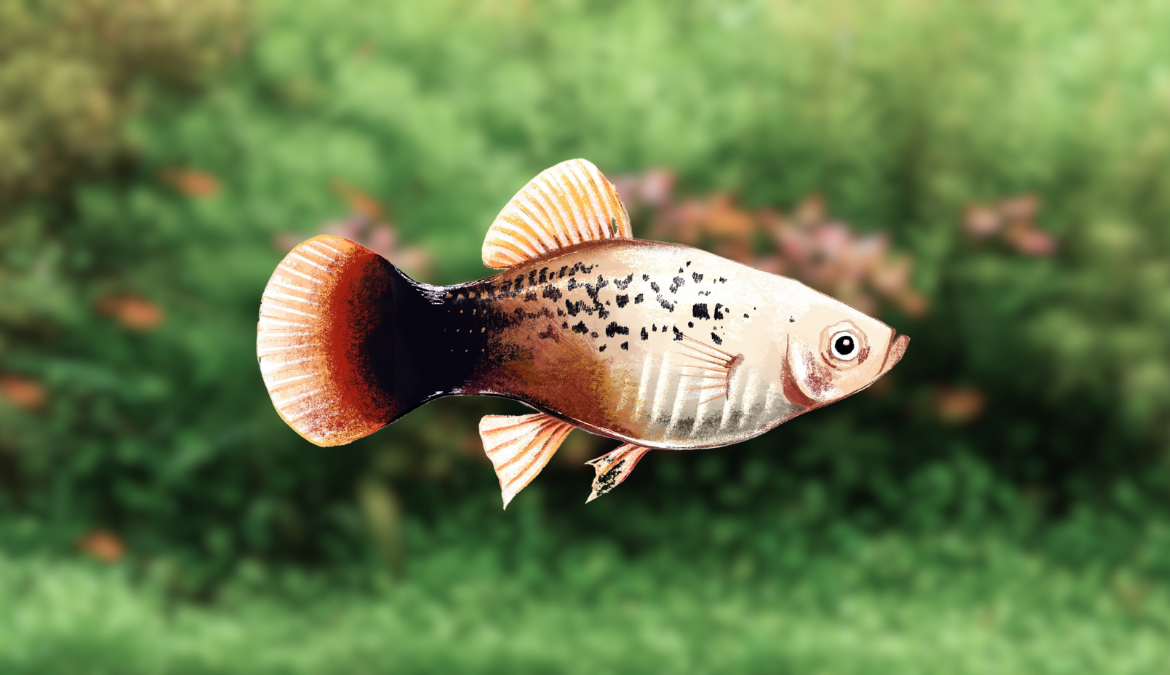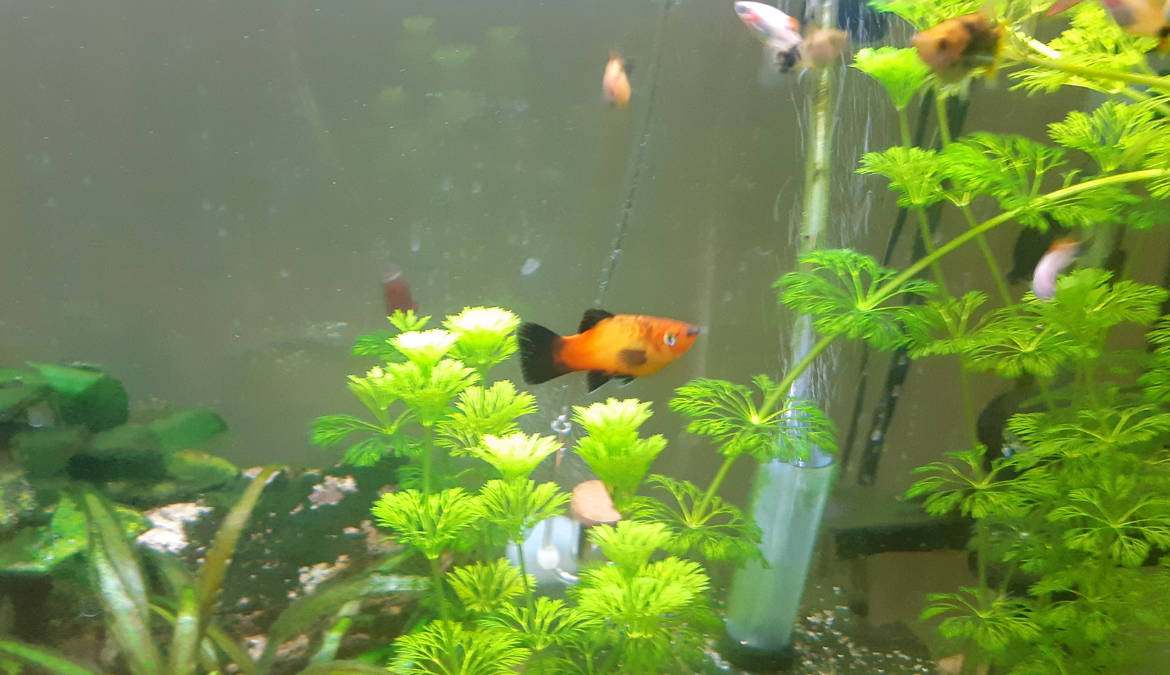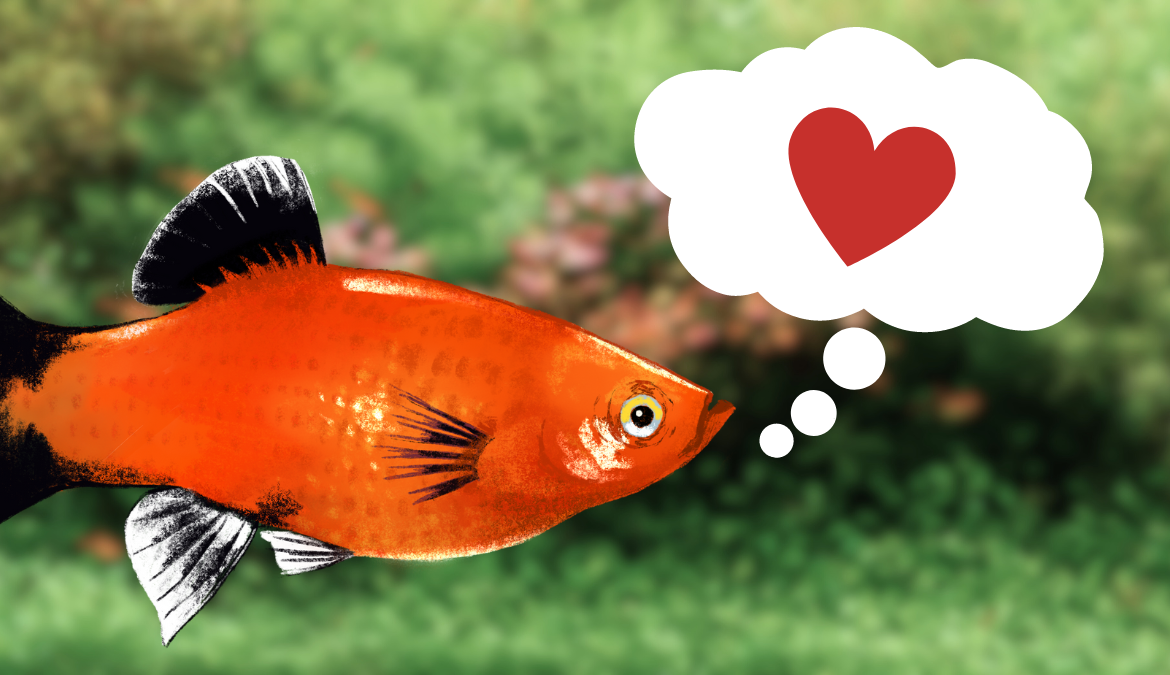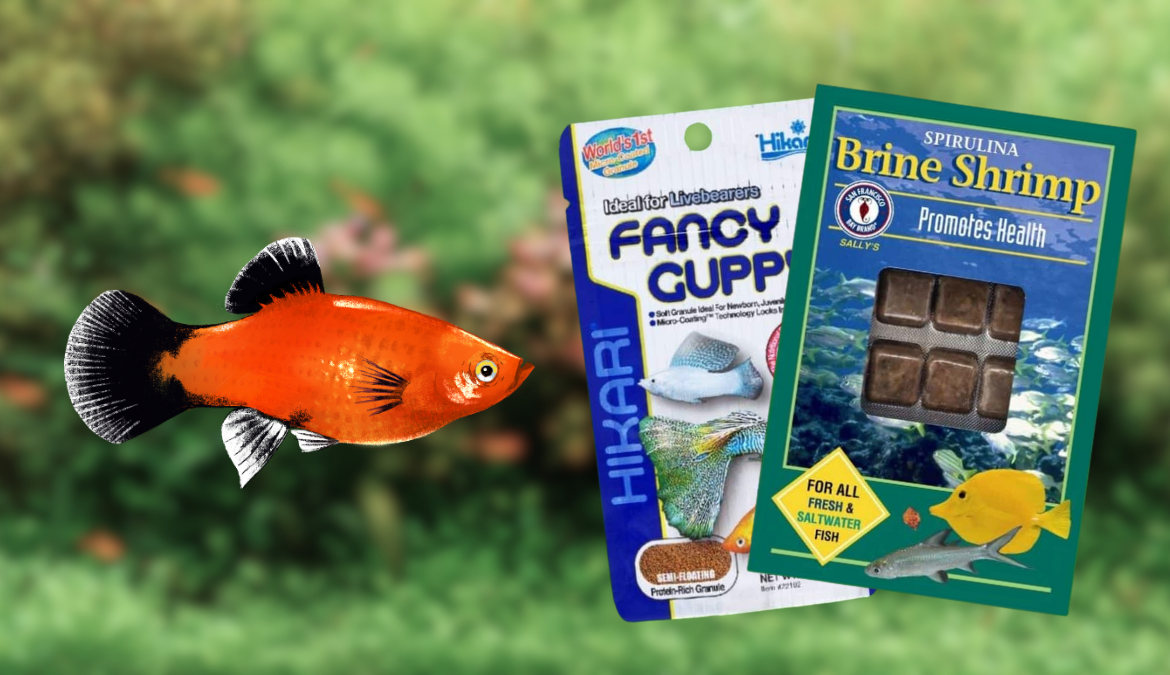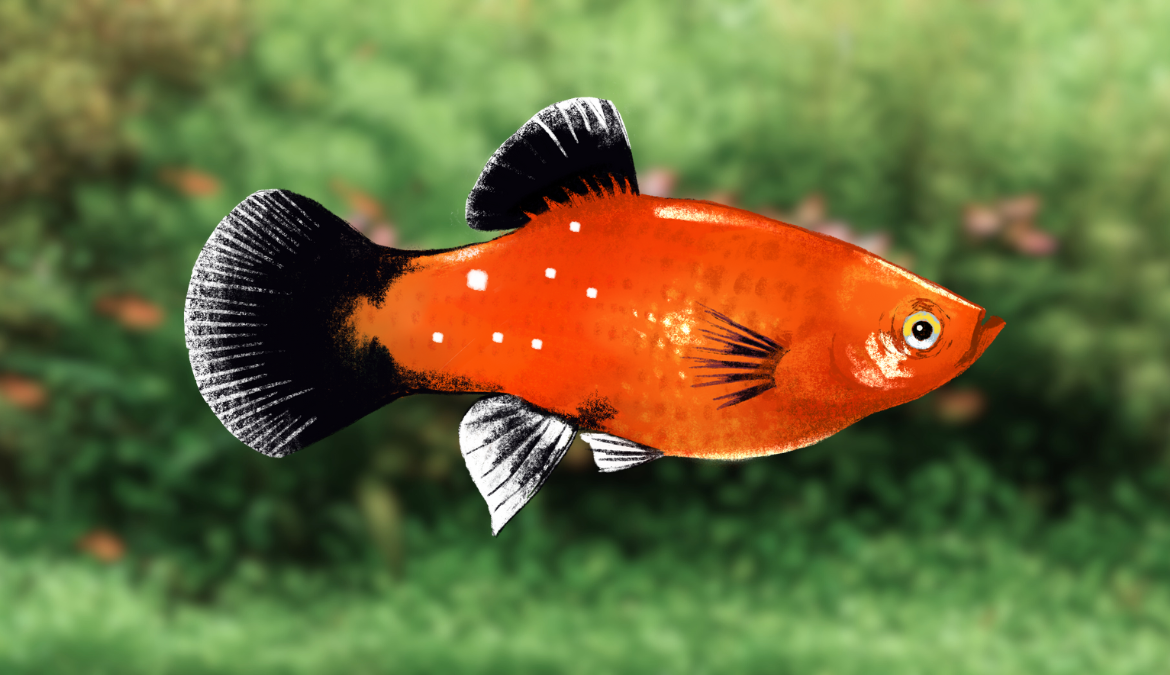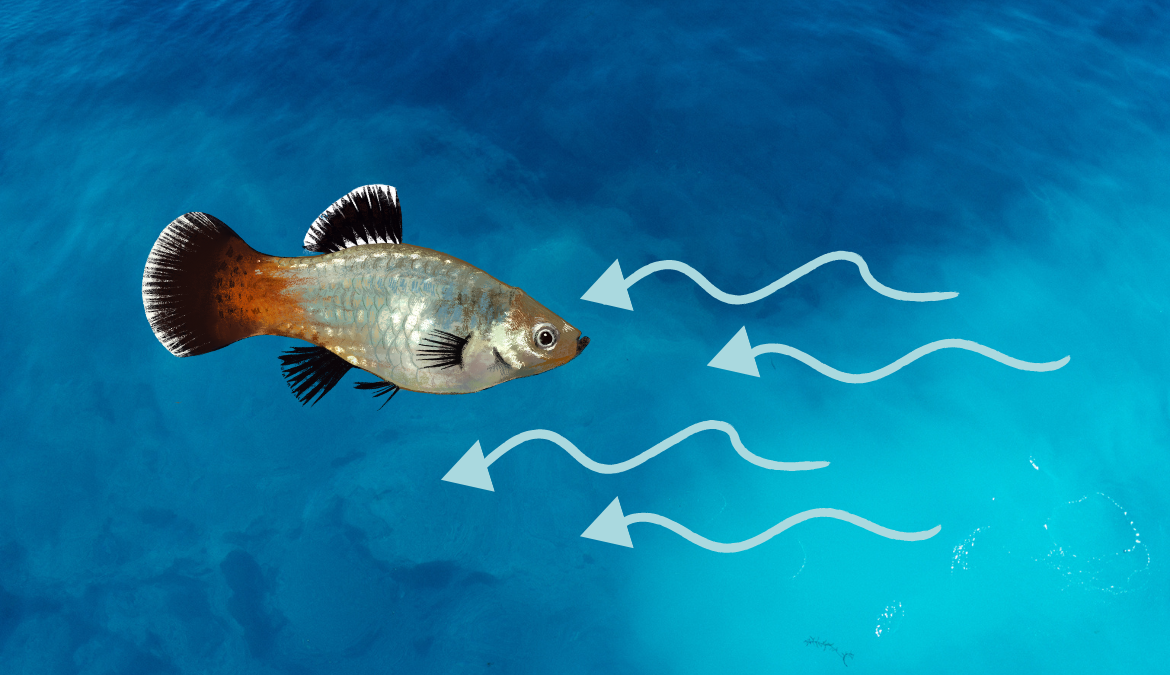Clove oil overdose and MS-222 are quick and humane methods for ethanizing platy fish with terminal diseases, severe injuries, and irreversible conditions often make life unbearable for them. The procedure involves administering a low dose to sedate the fish, followed by a larger dose to create hypoxia.
Euthanizing a platy fish is a compassionate choice when they’re suffering from irreversible conditions or terminal illnesses.
This post will help you recognize signs of severe distress in platies, consult with a vet, and conduct humane euthanasia using Clove Oil or MS-222. Moreover, it will guide you on handling post-euthanasia procedures, coping with the loss, and ensuring the well-being of your remaining fish.
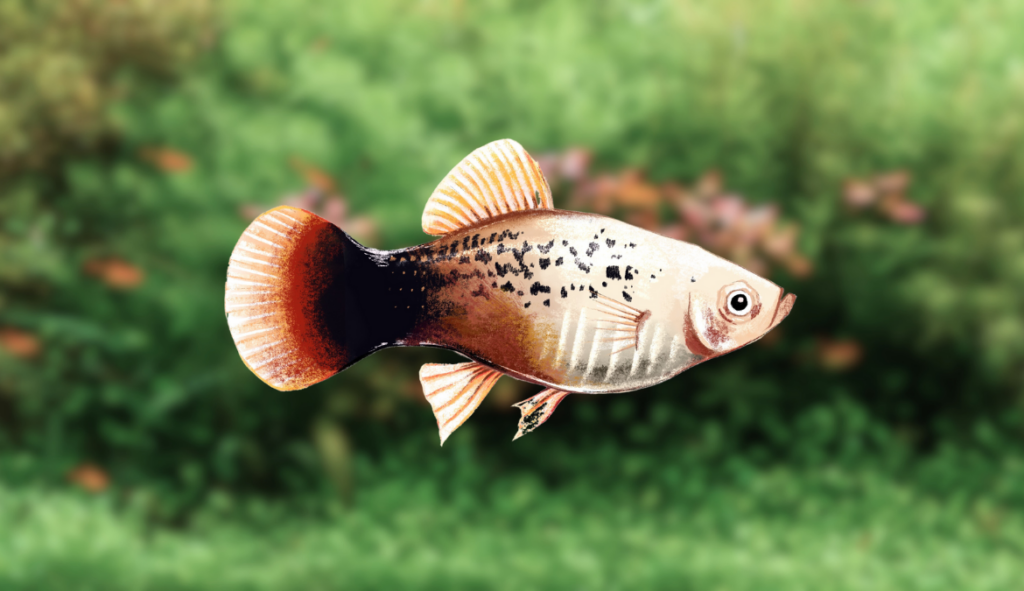
Contents
- 1 Understanding Euthanasia and Its Necessity for Pet Fish
- 2 Knowing When It’s Time: Making the Difficult Decision
- 3 Euthanasia Methods: Which are Humane and Appropriate for Platy Fish?
- 4 The Euthanasia Process: Steps to Follow
- 5 After Euthanasia: Proper Disposal and Cleaning Procedures
- 6 Coping with the Loss: Emotional Aspects of Euthanizing Your Pet Fish
- 7 Caring for Your Remaining Platy Fish After Euthanasia
- 8 Conclusion: Making the Right Choice for Your Platy Fish
Understanding Euthanasia and Its Necessity for Pet Fish
What is euthanasia and why might it be necessary for a platy fish?
Euthanasia for platy fish is often considered when these vibrant, active creatures display consistent signs of discomfort, distress, or unusual behavior.
Terminal diseases, severe injuries, and irreversible conditions often make life unbearable for them, and despite our best intentions and care, recovery may not be possible.
Euthanasia then emerges as the most compassionate choice, trading a prolonged, painful existence for a quick, painless end.
Recognizing the signs of severe sickness or suffering in platy fish
Distinguishing normal behavior from signs of severe suffering is crucial. Platy fish, being a resilient species, often hide their pain until it becomes unbearable. Here are some warning signs:
- Rapid gill movement;
- Clamped fins;
- Erratic swimming;
- Complete loss of appetite;
- Noticeable weight loss; and
- Abnormal growths.
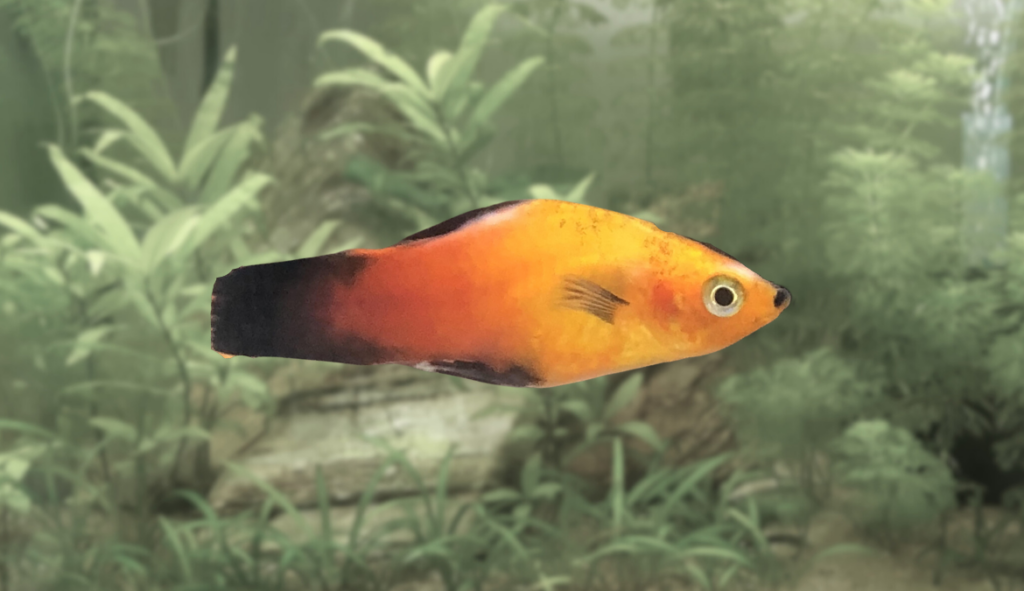
It’s best to consult a vet if you notice persistent, unusual behavior, as they can rule out common, treatable conditions before considering euthanasia.
However, the reality for most fishkeepers is that a vet will be unreasonably expensive for treating a single platy fish. Not to mention, it’s often difficult to find vets that will treat ornamental fish. And transporting your fish to the vet will often cause more stress, worsening its condition.
Thta’s why I recommend that fishkeepers do their best to educate themselves on identifying and treating illness the best they can.
Knowing When It’s Time: Making the Difficult Decision
Understanding the life cycle and natural lifespan of a platy fish
Understanding a platy fish’s life cycle can provide context about their health. Platy fish have a typical lifespan of 3-5 years in ideal conditions, undergoing several life stages, including fry, juvenile, and adult.
This depends on many factors, including genetics and where you buy your platies from.
In my experience, a typical platy’s lifespan will be between 2-3 years.
If your fish is near the end of its lifespan and displaying symptoms of severe illness, it may be a natural transition.
Irreversible conditions and terminal illnesses in platy fish
Irreversible conditions such as tumors, severe body deformities, and advanced stages of diseases like dropsy or fish tuberculosis often warrant consideration for euthanasia.
Terminal illnesses may cause the fish to suffer needlessly, with little chance for recovery despite treatment. Being familiar with these platy fish diseases can guide your decision-making process.
Euthanasia Methods: Which are Humane and Appropriate for Platy Fish?
When euthanasia becomes the compassionate choice, it’s crucial to select a method that minimizes distress and pain to the platy fish. Two widely recognized humane methods are Clove Oil and MS-222 (Tricaine Methanesulfonate).
These methods, approved by veterinarians and fish health professionals, ensure the fish is unconscious before life is ended, reducing suffering.
In this article, I will discuss the clove oil method because that’s what I have experience with and it’s also the easier-to-follow and more accessible method available to most fishkeepers.
Overview of humane euthanasia methods for platy fish
Humane euthanasia for platy fish should cause minimal distress, be fast-acting, and ensure unconsciousness before death.
The Clove Oil method is widely accepted due to its efficiency, low cost, and minimal pain caused to the fish.
The Clove Oil method: Steps and considerations
Clove oil contains eugenol, a natural anesthetic that can peacefully put your platy fish to sleep before causing its demise. It’s a readily available wherever you can buy essential oils and is a cost-effective method for fish euthanasia.
However, it must be done correctly.
A two-stage process is recommended, initially sedating the fish with a lower concentration before moving to a higher concentration for euthanasia.
The Euthanasia Process: Steps to Follow
Euthanizing a pet fish is a grave responsibility and must be carried out with utmost care and consideration. The process involves preparation, conducting the procedure, and monitoring throughout to ensure the fish’s discomfort is minimized.
Preparing for the procedure: Necessary supplies and setup
Before euthanizing your platy fish, you need to prepare all the necessary supplies. For the Clove Oil method, you’ll need clove oil, a container separate from your aquarium to place your fish, and a secondary container to mix the clove oil.
Conducting the procedure: Detailed steps to follow using Clove Oil
Once you have your supplies ready, you can proceed with the euthanasia. It’s essential to ensure that the process is smooth and causes minimal distress to the platy fish.
For the Clove Oil method, start by netting your fish into a container with tank water. A standard Tupperware-sized container is a good size (about 250ml).
Next, add an ounce or two of tank water into a small secondary container with a lid – similar to the size you might put a salad dressing in. Add 2-3 drops of clove oil, put the lid on, and shake vigorously until the color turns mily white.
Next, pour the clove oil mixture into the container with your fish. After a minute or two you should notice the platy’s gill movement slow down considerably as they stop moving. This is a sign that they are sedated.
Once the fish is sedated, you then move it to a higher concentration for euthanasia.
Add more tank water back into your small secondary container. Do not scoop it out of your primary tank as you will get clove oil in it!
This time, add 10-15 drops of clove oil, lid, and shake vigorously. Add this highly concentrated mixture into the container with your fish. This will peacefully euthanize your fish.
Monitoring the procedure: Ensuring the fish’s discomfort is minimized
While carrying out euthanasia, it’s essential to monitor your platy fish closely. Look for signs of distress like rapid gill movement or thrashing.
If such signs persist, it may indicate that the anesthetic concentration is too low and should be adjusted. The goal is to ensure your pet loses consciousness without unnecessary suffering.
Once the fish has stopped moving and gill movement ceases, it’s an indication that the process is complete.
After Euthanasia: Proper Disposal and Cleaning Procedures
Once the difficult task of euthanasia is completed, there are a few more steps to follow. Proper disposal of your beloved pet and thorough cleaning of the tank to prevent possible contamination are crucial.
The correct way to dispose of a deceased platy fish
Disposing of a deceased fish properly is essential for environmental reasons. Burial in a private yard is one common method, but be sure to check local regulations.
Some areas might allow small fish to be disposed of in organic waste or compost. Flushing is not recommended due to potential disease transmission to local waterways.
Cleaning and disinfecting the aquarium post-euthanasia
Post-euthanasia, cleaning and disinfecting your aquarium is a crucial step, especially if the euthanized fish was suffering from a contagious disease.
Use a recommended aquarium disinfectant and make sure to rinse thoroughly to remove any residue. If you have other fish in the same tank, be sure to provide them with a temporary home while cleaning.
Coping with the Loss: Emotional Aspects of Euthanizing Your Pet Fish
Euthanizing a pet fish can be an emotionally challenging process. It’s important to acknowledge these feelings and find ways to cope with the loss. The bond between you and your platy fish is unique, and it’s normal to grieve its loss.
Navigating grief: Acknowledging the emotional impact of euthanizing a pet
Allow yourself to grieve and express your emotions during this difficult time. Losing a pet, no matter how small, can have a significant emotional impact. Don’t hesitate to reach out to supportive friends, family, or pet loss support groups.
Memorializing your platy fish: Ways to remember your pet
Memorializing your platy fish can be a helpful part of the healing process. This could be through creating a small memorial in your home, sharing memories of your fish on social media, or even dedicating a new plant in your aquarium in their memory.
Remember, it’s the connection you had with your pet that matters, and honoring that can help bring closure.
Caring for Your Remaining Platy Fish After Euthanasia
Once you have taken care of your deceased fish, it’s important to focus on the well-being of any remaining platies. Proper care, ensuring a healthy environment, and monitoring their health closely can help prevent a similar situation.
Ensuring a healthy environment: Tips for maintaining your aquarium
Ensuring your aquarium remains a healthy environment for your platy fish is crucial. Regular cleaning, maintaining the right water parameters, providing ample hiding spots, and proper water movement are just a few things to consider.
Preventing disease: Importance of regular health checks and quarantine
Regular health checks can help detect signs of illness early, preventing the spread of disease and improving treatment outcomes. If you plan to introduce new platies to the tank, a quarantine period is recommended to ensure they are healthy and do not carry any diseases that could harm your existing fish.
Nutrition and enrichment: Ensuring your platy fish’s well-being
Proper nutrition is key to your platy fish’s well-being. A balanced diet of the right foods, including live or frozen options, ensures your fish receives the necessary nutrients. Besides nutrition, providing an enriching environment with plants, hiding spots, and moderate water movement can help stimulate your platy fish and promote healthy behaviors.
Conclusion: Making the Right Choice for Your Platy Fish
Euthanizing a platy fish is a challenging decision, but sometimes it’s the most compassionate one. By recognizing the signs of severe illness, consulting with professionals, and conducting the euthanasia process humanely, you can minimize your pet’s suffering. Dealing with the aftermath – emotionally and practically – is also an essential part of the process.
Despite the heartache, remember that you made a decision in the best interest of your beloved pet, trading a life of pain for a peaceful departure.


